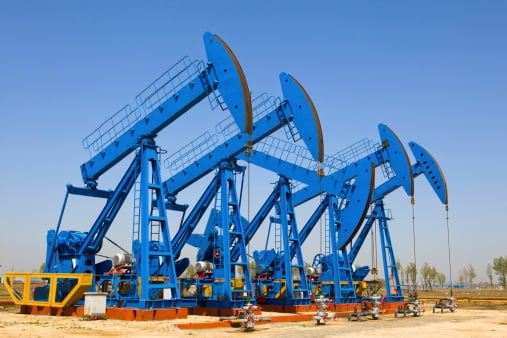Energy
IEA World Energy Outlook Worries About Political Stability, Investment
Published:
Last Updated:

To meet the projected demand for oil, the IEA reckons that global investment of $900 billion per year in upstream development is needed by the 2030s. The agency lists the threats to reaching that level of investment:
The complexity and capital-intensity of developing Brazilian deepwater fields, the difficulty in replicating the US tight oil experience at scale outside North America, unresolved questions over the outlook for growth in Canadian oil sands output, the sanctions that restrict Russian access to technologies and capital markets, and — above all — the political and security challenges in Iraq could all contribute to a shortfall in investment below the levels required.
The agency also noted that subsidies for fossil-fuel production totaled $550 billion in 2013, more than four times the subsidies for renewable energy, and concludes that the massive subsidies “are holding back investment in efficiency and renewables.”
ALSO READ: Major Oil Short Interest on the Rise
Electricity is the fastest-growing final form of energy, according to the IEA, and the agency notes the irony in the fact that the power sector contributes more than any other energy business to the reduction in the share of fossil fuels in the global energy mix. The move away from coal and toward renewables is responsible, and the IEA calculates that renewables will account for a third of global electricity generation by 2040.
By the 2030s, however, the leading fuel in the energy mix will be natural gas, driven by the conversion of coal-fired power plants in the United States being retired or converted to gas. The major potential obstacle to more natural gas consumption will be its price and the security of its delivery.
The IEA said that by 2040 the world’s energy supply mix will be almost evenly divided among oil, natural gas, coal and renewables (including hydro). That mix represents a sharp increase for renewables and a sharp decrease for fossil fuels, but the decline in fossil fuel use is “not enough to stem the rise in energy-related carbon dioxide emissions, which grow by one-fifth,” putting the world on a path to a 3.6°C rise in global average temperature. That rise is well above the target of a 2°C rise, the internationally agreed goal.
On oil prices, the IEA noted that the booming supply of crude oil from North America has lowered prices, but says it is not clear that the supply can keep prices down. As others have pointed out for a while now, the low prices lead to constrained capital investment in finding and developing new sources. Ultimately that can lead to rising prices due to shortage of supply. The upside is that lower crude prices boost both gross domestic product and demand for oil, in what could be described as a virtuous or vicious circle, depending on one’s point of view.
ALSO READ: Oil Drops 50% From All-Time High
If you want your portfolio to pay you cash like clockwork, it’s time to stop blindly following conventional wisdom like relying on Dividend Aristocrats. There’s a better option, and we want to show you. We’re offering a brand-new report on 2 stocks we believe offer the rare combination of a high dividend yield and significant stock appreciation upside. If you’re tired of feeling one step behind in this market, this free report is a must-read for you.
Click here to download your FREE copy of “2 Dividend Legends to Hold Forever” and start improving your portfolio today.
Thank you for reading! Have some feedback for us?
Contact the 24/7 Wall St. editorial team.